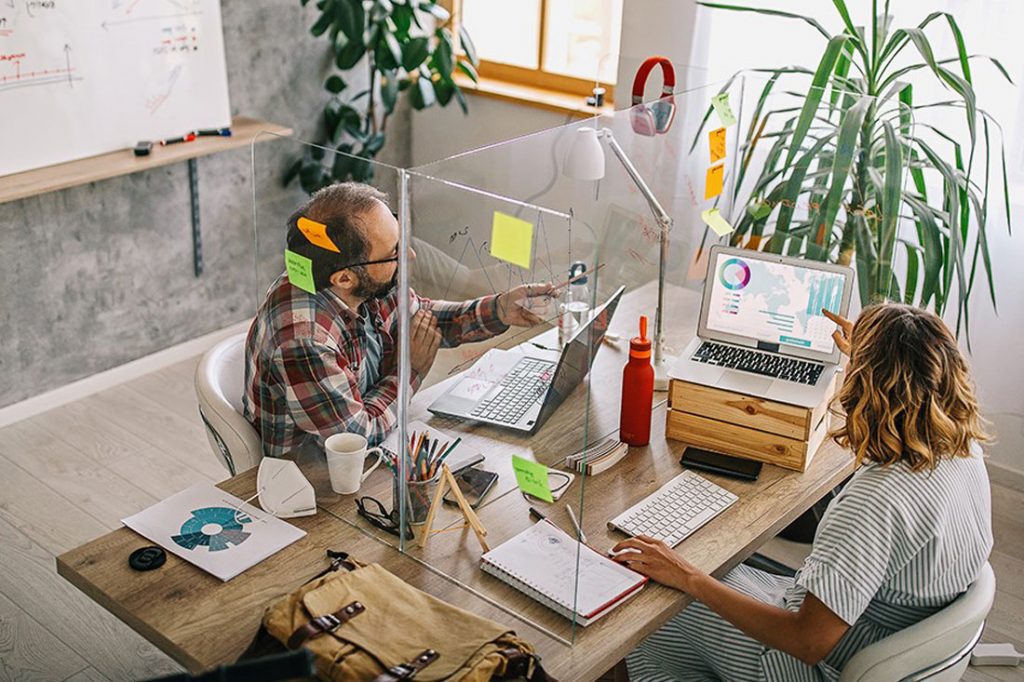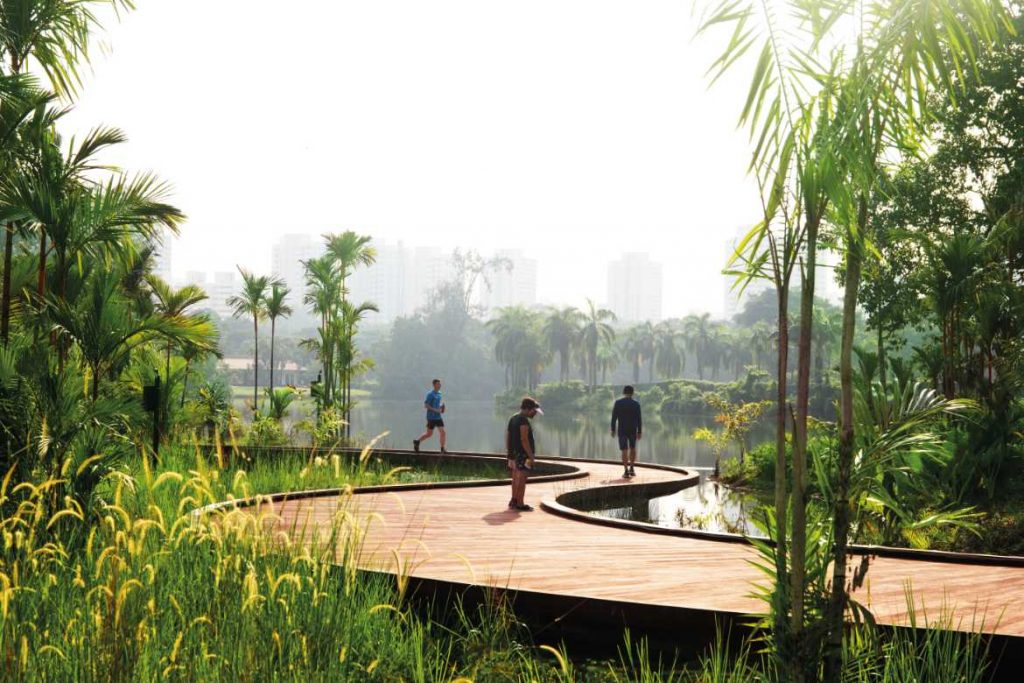As cities emerged from the pandemic with plans to become more resilient, it is an opportunity to engage people in better placemaking. Regular columnist Justin Zhuang shares his perspective.

WY-TO Group’s winning C40 Reinventing Cities Global Competition refreshes Bukit Timah Fire Station through repurposing and adaptive reuse. See full project here. Image courtesy of WY-TO Group
April 6th, 2022
Entrances manned by security guards. Haphazardly placed paper signage for directions. Navigating endless tape to get in and out of buildings. Getting around the city can feel very much like entering a war zone nowadays. The COVID-19 pandemic has not only disrupted our everyday lives but our urban landscape too. The sudden need for new screening protocols has led to many makeshift solutions that have upended the design of places and fragmented them into ugly, awkward and even dead spaces.
While once regarded as temporary inconveniences, measures such as screening and social distancing look likely to become a permanent part of our everyday with cities planning to live with COVID-19 as an endemic disease. How they are integrated into our built environment needs to be re-examined lest they permanently remake the city into a fortress.
Several building owners in Singapore have begun to install more permanent solutions. Gantry gates, once a common sight only in train stations and secure office towers, have popped up in shopping malls. While more secure than having people man a screening station, it is a jarring welcome into these spaces of leisure. The same goes for plastic screens that are increasingly popular in offices and dining establishments. The result is ‘clinical’ environments, which a recent study has found may not be very effective after all.

Architects and designers have also begun advocating for adaptable and flexible solutions such as multifunctional spaces as well as mobile barriers and furniture. These can be easily rolled out when needed and blend into existing designs. While we can expect more of these in up-and-coming projects, the greater challenge is in existing ones. How can old buildings be adapted in a meaningful and sustainable manner? Especially so in Singapore where land is a premium. Perhaps it requires an urban planning policy which can standardise these efforts and connect them together to create a more pandemic resilient city.
Private developments, however, are just a part of the solution. At the height of the pandemic, public places were the few spaces open for those seeking respite from working and studying all day at home. In Singapore, crowds thronged nature reserves and parks which have continued to serve as important getaways with overseas travel restrictions still in place. But such green spaces are just one of the city-state’s many types of public spaces. There are also public libraries, community centres and even the void decks of public housing estates. Each can take on new roles to alleviate some of the pressures that have arose with the home increasingly replacing the office and even school as the centre of people’s everyday lives.

For instance, some void decks and community centres already have senior activity centres and study corners. An obvious addition would be working spaces. Housing estates can also be equipped to support more pop-up events so that services can come to the residents, especially when movement is restricted during a pandemic. Imagine the multi-storey car park becoming a hive of activities instead of a storeroom for cars. Besides creating new uses, existing facilities such as the playground and neighbourhood gardens can be relooked by involving the residents in creating more distinct places.
Now more than ever, people have come to realise how ‘home’ is more than just the confines of their private abode. It is an opportune time to involve them more in ongoing efforts to rebuild the city and strengthen their connections with places. If there is anything the pandemic has reminded us of is that people are the life of cities. Without them, a city is simply a collection of desolate buildings and silent streets—an emptied place that is no better than an empty space.
This article was first published in Cubes Issue #103
A searchable and comprehensive guide for specifying leading products and their suppliers
Keep up to date with the latest and greatest from our industry BFF's!

Savage Design’s approach to understanding the relationship between design concepts and user experience, particularly with metalwork, transcends traditional boundaries, blending timeless craftsmanship with digital innovation to create enduring elegance in objects, furnishings, and door furniture.

Marylou Cafaro’s first trendjournal sparked a powerful, decades-long movement in joinery designs and finishes which eventually saw Australian design develop its independence and characteristic style. Now, polytec offers all-new insights into the future of Australian design.

Suitable for applications ranging from schools and retail outlets to computer rooms and X-ray suites, Palettone comes in two varieties and a choice of more than fifty colours.

Channelling the enchanting ambience of the Caffè Greco in Rome, Budapest’s historic Gerbeaud, and Grossi Florentino in Melbourne, Ross Didier’s new collection evokes the designer’s affinity for café experience, while delivering refined seating for contemporary hospitality interiors.

Dallas Rogers, Head of Urban Discipline at the School of Architecture, Design and Planning, University of Sydney, comments on the history of map-making in our cities.

Designed to drive positive change, promote sustainable practices and cultivate inclusive communities, the recent launch of the Parliamentary Friends of Australian Design will champion the role of urban design in shaping the nation’s identity.
The internet never sleeps! Here's the stuff you might have missed

Paying homage to that wonderful tool of life, the book, SJK Architects’ design for the new headquarters of Penguin Random House is both a temple to the library and a captivating place to work.

Third in the series of boutique hotels under the Lloyd’s Inn brand, Lloyd’s Inn Kuala Lumpur bring the immediacy of nature to the new high-rise hospitality experience in the heart of a bustling city.

Savage Design’s approach to understanding the relationship between design concepts and user experience, particularly with metalwork, transcends traditional boundaries, blending timeless craftsmanship with digital innovation to create enduring elegance in objects, furnishings, and door furniture.